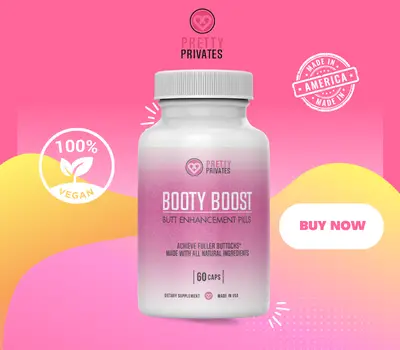How to Get More Protein on a Vegan Diet

Protein is an essential nutrient for overall health and well-being, playing a crucial role in muscle repair, hormone production, immune function, and much more. For those following a vegan diet, ensuring you’re getting enough protein can sometimes seem challenging, as many traditional protein sources like meat, dairy, and eggs are off-limits. However, with proper planning and a good understanding of plant-based protein sources, it’s entirely possible to meet your protein needs on a vegan diet.
This guide will walk you through the best vegan protein sources, tips for increasing your protein intake, and how to build balanced, protein-rich meals to support your health goals.
How Much Protein Do You Need?
The recommended daily intake of protein depends on several factors, including age, sex, activity level, and overall health goals. However, a general guideline is to aim for 0.8 grams of protein per kilogram of body weight for the average adult. For more active individuals or those aiming to build muscle, this recommendation can increase to 1.2–2.0 grams of protein per kilogram of body weight.
For example, if you weigh 70 kilograms (154 pounds), you would aim for at least 56 grams of protein per day. If you’re an athlete or highly active, your protein intake might range between 84 and 140 grams per day.
Understanding Plant-Based Protein Sources
Unlike animal proteins, which are complete proteins (meaning they contain all nine essential amino acids), most plant-based proteins are incomplete, with the exception of a few like quinoa and soy. However, by consuming a variety of plant-based foods throughout the day, you can easily get all the essential amino acids your body needs.
Now, let’s dive into some of the best plant-based protein sources and how to incorporate them into your vegan diet.
Top Plant-Based Protein Sources
1. Legumes (Lentils, Chickpeas, Black Beans, and Peas)
Legumes are one of the most nutrient-dense and protein-rich foods available to vegans. Not only do they provide a substantial amount of protein, but they are also packed with fiber, iron, and complex carbohydrates.
- Protein Content: One cup of cooked lentils contains about 18 grams of protein, while a cup of cooked chickpeas offers around 14 grams.
- How to Use: Add legumes to salads, soups, stews, or curries. You can also make hummus from chickpeas or blend black beans into veggie burgers or tacos.
2. Tofu, Tempeh, and Edamame (Soy-Based Proteins)
Soy is a complete protein, meaning it contains all nine essential amino acids. Tofu, tempeh, and edamame are versatile soy-based foods that provide a high-quality source of protein for vegans.
- Protein Content: Half a cup of tofu provides about 10 grams of protein, while tempeh offers around 15 grams for the same amount. Edamame delivers about 17 grams of protein per cup.
- How to Use: Tofu and tempeh can be marinated and added to stir-fries, salads, or grain bowls. Edamame makes a great snack or can be tossed into a salad or soup.
3. Quinoa
Quinoa is a gluten-free grain that is also a complete protein, providing all nine essential amino acids. It’s a versatile grain that can be used in various dishes as a substitute for rice or pasta.
- Protein Content: One cup of cooked quinoa contains about 8 grams of protein.
- How to Use: Use quinoa as a base for salads, grain bowls, or as a side dish. It can also be used in veggie burgers, soups, or breakfast porridge.
4. Seitan
Seitan, also known as wheat gluten, is a high-protein meat substitute made from gluten, the main protein found in wheat. It has a chewy texture that makes it a great substitute for chicken or beef in various recipes.
- Protein Content: Seitan provides around 25 grams of protein per 3.5 ounces, making it one of the highest plant-based protein sources.
- How to Use: Grill, sauté, or stir-fry seitan and use it in sandwiches, stir-fries, or fajitas.
5. Nuts and Seeds (Almonds, Chia Seeds, Hemp Seeds, and Flaxseeds)
Nuts and seeds are not only a good source of protein but also provide healthy fats, fiber, and various vitamins and minerals. Some seeds, like chia, hemp, and flax, also contain omega-3 fatty acids.
- Protein Content: Two tablespoons of chia seeds provide about 4 grams of protein, while a quarter-cup of almonds offers around 7 grams. Hemp seeds are particularly high in protein, with about 10 grams per three tablespoons.
- How to Use: Add nuts and seeds to smoothies, oatmeal, yogurt, or sprinkle them over salads. You can also use nut butters as a spread or dip for fruit and vegetables.
6. Nutritional Yeast
Nutritional yeast is a deactivated yeast that is commonly used in vegan cooking for its cheesy flavor. It is also a good source of complete protein, as well as B vitamins.
- Protein Content: Two tablespoons of nutritional yeast provide about 8 grams of protein.
- How to Use: Sprinkle nutritional yeast over popcorn, pasta, soups, or salads, or mix it into sauces and dressings for a cheesy flavor.
7. Whole Grains (Brown Rice, Oats, Barley, and Buckwheat)
Whole grains are often overlooked as a source of protein, but they can contribute significantly to your daily intake. Pairing whole grains with legumes makes for a complete protein meal.
- Protein Content: One cup of cooked oats provides about 6 grams of protein, while brown rice offers about 5 grams per cup.
- How to Use: Incorporate whole grains into meals as a base for grain bowls, add oats to smoothies or make oatmeal, or use buckwheat or barley in soups and stews.
8. Vegan Protein Powders
Vegan protein powders made from peas, brown rice, hemp, or soy are convenient options for boosting your protein intake, especially if you’re active or aiming to build muscle.
- Protein Content: One scoop of vegan protein powder typically contains between 15 and 25 grams of protein, depending on the brand and type.
- How to Use: Mix vegan protein powder into smoothies, oatmeal, or energy bars for a quick protein boost.
Tips for Increasing Protein Intake on a Vegan Diet
Now that you know where to find plant-based protein, let’s look at some tips for increasing your protein intake throughout the day.
➤ Incorporate Protein into Every Meal
To ensure you’re meeting your daily protein needs, make it a goal to include a protein source with every meal and snack. For example:
- Breakfast: Oatmeal with chia seeds and almond butter
- Lunch: Quinoa salad with chickpeas and avocado
- Dinner: Stir-fried tofu with broccoli and brown rice
- Snack: Hummus with veggies or a protein bar
➤ Combine Protein Sources
Combining different plant-based protein sources, such as legumes and grains, can help you get a full range of amino acids. For example, rice and beans or hummus with whole-grain pita are complementary proteins that together provide a complete amino acid profile.
➤ Choose High-Protein Snacks
Instead of reaching for carb-heavy snacks, opt for high-protein snacks like roasted chickpeas, nuts, protein bars, or smoothies with added protein powder. This will help you hit your protein targets without adding too many extra calories.
➤ Use Plant-Based Milk Alternatives
Choose plant-based milk alternatives that are fortified with protein. Soy milk, for example, contains around 7 grams of protein per cup, making it a better option than almond milk, which only has about 1 gram of protein per cup.
➤ Meal Prep Protein-Rich Foods
Prepare large batches of protein-rich foods like lentils, quinoa, or tempeh at the beginning of the week so you always have a quick and easy source of protein on hand. This makes it easier to throw together protein-packed meals when you’re short on time.
Common Myths About Protein on a Vegan Diet
🧐 Myth 1: You Can’t Get Enough Protein on a Vegan Diet
✅ Fact: With careful planning and a diverse range of protein sources, it’s entirely possible to meet or even exceed your protein needs on a vegan diet. Legumes, tofu, tempeh, seitan, quinoa, and nuts provide substantial protein to support your dietary needs.
🧐 Myth 2: Plant Proteins Are Inferior to Animal Proteins
✅ Fact: While most plant proteins are not complete proteins, combining different plant foods throughout the day ensures you get all the essential amino acids. Soy-based foods like tofu and tempeh are complete proteins, offering the same benefits as animal proteins.
In Conclusion: Getting Enough Protein on a Vegan Diet
Achieving adequate protein intake on a vegan diet is not only possible but also easy with a little bit of planning. By incorporating a variety of protein-rich plant foods like legumes, soy products, quinoa, and nuts, you can meet your protein needs and enjoy a balanced, nutritious diet.
Whether your goal is to maintain muscle,
lose weight, or just ensure overall health,
following these tips will help you stay.
Share:
Related Posts

Signs of Magnesium Deficiency: What to Watch For and How to Address It
Discover the common signs of magnesium deficiency and how it affects your health. Learn about symptoms like muscle cramps, fatigue, and anxiety, and find out how to boost your magnesium levels for better well-being.

How to Stay Motivated to Exercise in the Cold
Stay motivated to exercise in cold weather with these 10 expert tips! Learn how to set achievable goals, find the right gear, and embrace winter workouts to stay fit and energized all season long.

How to Get More Protein on a Vegan Diet
Learn how to boost your protein intake on a vegan diet with this comprehensive guide. Discover the best plant-based protein sources and practical tips to meet your nutritional needs while staying vegan.

Why You’re Not Losing Weight Even at a Caloric Deficit: A Detailed Guide
Frustrated with not losing weight despite being in a calorie deficit? Discover the reasons why your weight loss may be stalled and get tips on how to overcome common obstacles like metabolic adaptation, inaccurate tracking, and hormonal imbalances.






